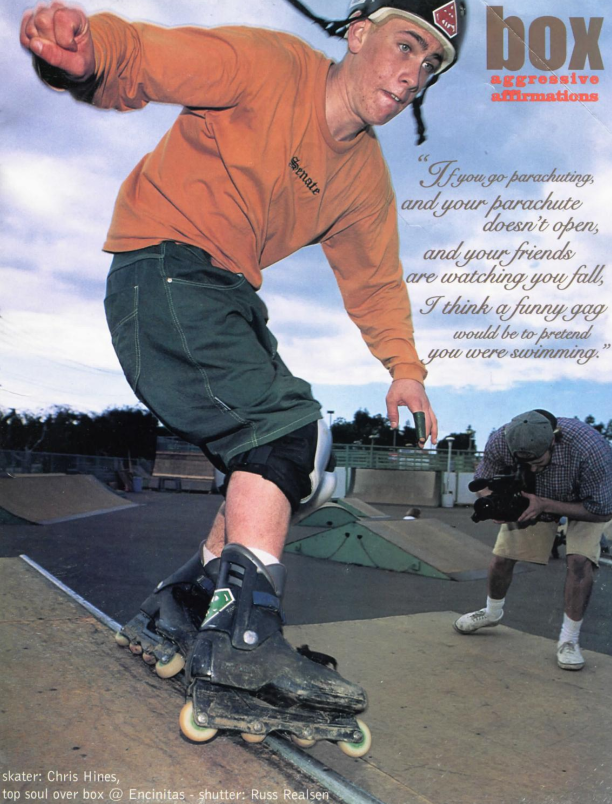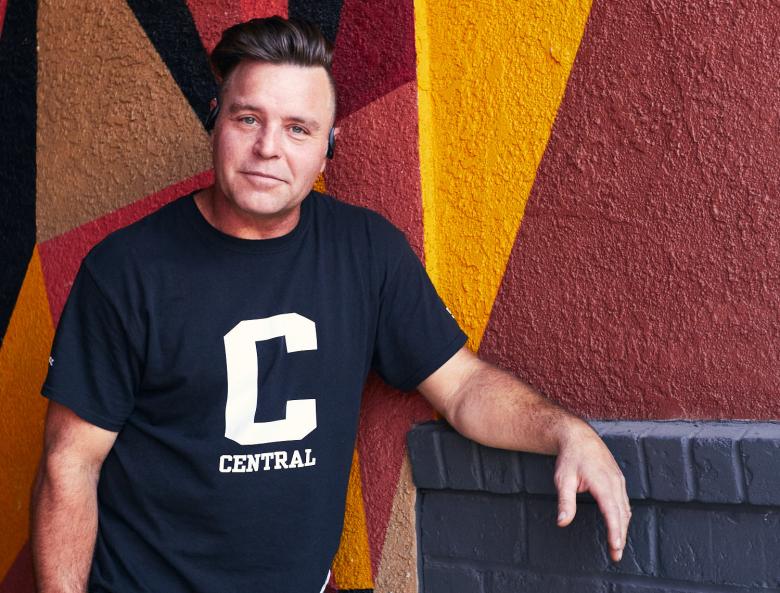WORDS: CONTRIBUTING EDITOR DEVON BABIN, @WORDSMITH1982.
In skating’s heyday of the ‘90s and early ‘00s, when countless people all over the globe were embracing a new and exciting sport in hoards, the challenge was to differentiate one form of inline skating from another. Along with inline hockey, freestyle, dance, racing, and others, “aggressive skating” was unofficially adopted to describe “our” type of skating to the general public.
With a group of mostly angsty teenagers grinding handrails and ledges, hucking themselves over huge gaps, and stair bashing, aggressive skating, for a time, seemed to accurately describe the style and energy of the type of skating that was being portrayed in videos, magazines, and, of course, major action sports competitions including MTV Sports, X Games, Gravity Games, among others.
The thing is, much like the 30 and 40-year-olds who continue to skate or have taken it up again after a hiatus, skating has grown and matured. Simply look at urban skating, wizard skating, and other offshoots and there is a justified question that keeps coming up: does the term aggressive skating accurately describe modern-day skating? Chris Edwards (aka. The Airman) one of skating’s pioneers who is still skating and making his mark on the sport, had this to say.
“In the early ‘90s, we were fighting to be recognized as a legitimate segment of the inline marketplace. We, at the time, were fighting against the rest of the rolling community that didn’t want us to be part of the industry.”
“Due to this, there were mass publications and mainstream media showcasing recreational and dancing style skating. In order for there to be a clear line between what we were doing in the X-Games, ESPN coined the name ‘aggressive inline’ to make a clear distinction.”
Chris Edwards



While it’s likely not possible nor realistic to think a sport or a segment of inline skating can be renamed after decades of use, it is worth having the conversation. If aggressive skating isn’t the right term, what is? Much of the motivation to have an accurate description of our form of inline skating has less to do with how skaters interact with each other and more with how we communicate and portray the type of skating we do to the general public. While many skaters don’t want to go down the road of massive contests like the X-Games, sharing the joy of aggressive skating with others and growing the sport is considered by most to be a positive move and something that will keep skating prospering and progressing.
“With us out of the X-Games and skating going back to grassroots companies run by skaters, we do not have the publicity that we once had,” says Jason Spriggs, a long time skater and the man behind Item Clothing. “So the general public, in my opinion, has little to no idea that the sport is alive and thriving again. It will take major media involvement to bring the hype back to what it was in the ‘90s and early ‘00s. We need another Airborne or something along those lines to bring it back to the mainstream focus.”

Spriggs continues, “If you look at where the sport is now, I think aggressive is a term that no longer supports the sport. The sport is more stylish now than it ever was. With the Them collabs bringing fashion to skating and USD releasing GOAT skates like Feinberg and Sagona, the sport allows you to customize your setup to match your unique style. The only fashion we had in the ‘90s was Arlo’s haircuts in the early Hoax movies.”
The thing is, similar to Ski-Doo and Kleenex, many people describe our sport as “Rollerblading” which is the most recognizable term publicly but causes issues because Rollerblade is only one company. Yes, it is arguably the original company, but skating is much more than one company or brand.
“Internally it is known as such (aggressive skating), or as skating, but to the wider public it is known as Rollerblading. In order to minimize confusion I think from a marketing perspective Rollerblading is a better term that allows anyone to instantly recognise and understand what is going on,” says well-known Youtuber Jimmy the Giant who produces content focused on cultural trends along with action sports including parkour, BMX, and yes, aggressive skating. In fact, he even took up the sport and learned to skate in six months. In other words, he has a unique perspective.
Comparing style & presentation from two different eras




“Aggressive inline skating is a convoluted term that contains too many characters for a Youtube title,” he says in jest. “Also, the [descriptor] is aggressive inline skater whereas rollerblading is rollerblader. The latter is easier for Joe Public to say and remember.”
Skaters are people with differing opinions and views, so finding an apt term that everyone agrees on is likely impossible. For instance, Jason Spriggs sees “skating” as the right term and a better catch-all for different types of skating that have traditionally fell under the aggressive skating umbrella.
“Skating. We are literally skating. That’s what we do,” he says.
At first glance, it seems aggressive skating is largely dominated by middle-aged men, but that trend is certainly changing. There are plenty of younger people entering the sport and we have to recognize that the Bladies movement has seen countless female skaters embrace the sport over the past few years.
While many people think “aggressive skating” limits our ability to promote and grow the sport, not everyone agrees.
“I don’t think it’s the term that makes it difficult to attract people to our sport at all. There are a lot of reasons why rollerblading doesn’t get the popularity it deserves, but things are looking brighter. More events are happening, and people are growing and maturing. I’ve seen some great acceptance practices and equality practices in the industry which is super admirable to see! Everything from mental health awareness to LGBTQIA support and suicide prevention awareness,” says long-time skater Angie Bender who runs contests and is behind the RollerBender brand.

“It depends on the audience. Again, if you are aware of action sports I think you can say inline skating, rollerblading or blading,” says Megan Petersen who is the driving force behind the popular Bladies brand. “I work at companies like Nike and Men’s Warehouse and have to explain the sport to corporate leaders and just tell them I do stunts on rollerblades.”
Lauric Picard, a Swiss skater living in Montreal, has made a name for himself as one of the most noteable younger skaters in the sport. Having yet to turn 20-years-old, his perspective is undoubtedly different from the skaters who grew up in the ‘90s and early ‘00s.
“No, I don’t think [aggressive skating] is still accurate. We don’t need such a long Y2K term for our sport. Most other sports have a one word name like scootering, skateboarding etc,” he says. “It does not describe accurately what we are doing. We sure are aggressive in our skating sometimes, but our sport has such a variety of different styles that it wouldn’t make sense to reduce it to only that.
While there will never be a consensus among all skaters, no matter a person’s age or background, few people think “aggressive skating” is the right term to describe the kind of skating we’re all a part of. The issue has more to do with changing the description to something everyone (or most people) will be happy with. Without specific rules or a governing body, it’s really up to skaters to embrace the term they feel fits best.
“I think the term aggressive can come across as a bunch of wild humans doing insane crazy things without any regard,” says Chris Edwards. “It does confuse the public and a misperception of the peaceful, passionate and committed skaters within the community! We are dedicated to our craft which doesn’t make us aggressive! Thirty years later, and with the lack of mainstream media, I feel the term aggressive was left in the ‘90s where it belongs! Today, we can simply say we are skaters or rollerbladers and enjoy the community and skating or whatever floats our boat!”







